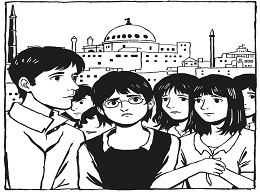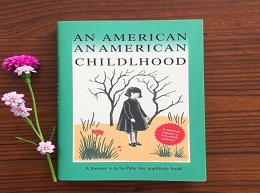Persepolis

A Deep Dive into "Persepolis": Marjane Satrapi's Graphic Memoir
Marjane Satrapi's *Persepolis* is an autobiographical graphic novel that provides a vivid and compelling account of her childhood and early adult years in Iran during and after the Islamic Revolution. Originally published in French in two volumes, *Persepolis* has been translated into numerous languages and has garnered critical acclaim for its unique blend of personal narrative and historical context. Satrapi's use of stark black-and-white illustrations enhances the emotional impact of her story, making it a powerful and accessible read. This review explores the key themes, narrative techniques, and cultural significance of Persepolis, offering readers a detailed analysis of this groundbreaking work.
A Personal Journey Amidst Political Turmoil
Satrapi’s memoir begins with her childhood in Tehran, depicting a period of relative freedom and cultural diversity before the Islamic Revolution. The revolution, which led to the fall of the Shah and the rise of the Islamic Republic, serves as a backdrop for much of the narrative, profoundly affecting Satrapi’s life and the lives of those around her.
Example: Childhood Innocence and Political Awakening
In the opening scenes of Persepolis, young Marjane, or Marji, is shown as a spirited and curious girl who dreams of becoming a prophet. Her innocence is gradually eroded as she witnesses the upheavals around her. The memoir poignantly captures her political awakening, such as when she learns about her family's involvement in the revolution and the harsh realities of political repression. The contrast between her childlike perspective and the brutal events she witnesses creates a powerful emotional resonance.
The Impact of War and Oppression
One of the central themes of Persepolis is the impact of war and political oppression on individuals and families. Satrapi's narrative delves into the hardships faced by Iranians during the Iran-Iraq War and the oppressive measures imposed by the Islamic regime.
Example: The Horror of War
Satrapi vividly portrays the terror of living through air raids and the constant threat of violence. In one memorable scene, she describes how her family and neighbors would rush to the basement during bombings, capturing the pervasive sense of fear and uncertainty. The illustrations of people huddling together, juxtaposed with the distant explosions, effectively convey the omnipresence of war in their daily lives.
Resistance and Resilience
Despite the oppressive environment, *Persepolis* is also a story of resistance and resilience. Satrapi highlights the ways in which individuals, especially women, resist the regime's attempts to control their lives and bodies.
Example: Defying the Dress Code
A recurring motif in the memoir is the strict dress code imposed on women. Satrapi recounts her own acts of defiance, such as wearing Western clothing and makeup underneath her veil. These small rebellions are depicted with both humor and defiance, illustrating the resilience of the human spirit in the face of authoritarianism. The scenes where Marji and her friends discuss the latest Western fashion trends or secretly listen to banned music underscore the tension between personal freedom and state control.
The Struggle for Identity
Persepolis also explores the theme of identity, particularly the struggle to reconcile one's cultural heritage with the desire for personal freedom. Satrapi's experiences in Iran and later in Europe highlight the complexities of identity formation in a diasporic context.
Example: Marji's Exile
The second part of the memoir focuses on Marji's time in Austria, where she is sent by her parents to escape the repressive environment in Iran. This period of exile is marked by a profound sense of alienation and identity crisis. Satrapi describes her efforts to fit in with her European peers while grappling with the guilt and longing for her homeland. Her struggle to balance her Iranian heritage with her desire to assimilate into Western culture is poignantly depicted in both the narrative and the illustrations.
Visual Storytelling: The Power of Black and White
One of the most distinctive aspects of Persepolis is its use of black-and-white illustrations. Satrapi’s minimalist yet expressive art style plays a crucial role in conveying the emotional and psychological depth of her story.
Example: Symbolic Imagery
Satrapi often employs symbolic imagery to convey complex themes and emotions. For instance, the stark contrast between black and white is used to represent the binary oppositions of freedom and oppression, innocence and experience. In scenes depicting public executions or violent crackdowns, the use of black ink dominates the panels, creating a sense of foreboding and highlighting the gravity of the situation. Conversely, scenes of Marji's childhood or moments of personal joy are rendered with more balanced compositions, reflecting a sense of equilibrium.
Cultural and Historical Significance
Persepolis is not only a personal memoir but also a significant cultural and historical document. It offers a unique perspective on the Islamic Revolution, the Iran-Iraq War, and the experiences of Iranian women under theocratic rule. Satrapi’s work has been instrumental in fostering a greater understanding of these events in the Western world.
Example: Educational Impact
Persepolis has been widely adopted in educational settings, from high schools to universities, as a means of teaching about the complexities of Middle Eastern history and the human impact of political upheaval. Its accessible format and engaging narrative make it an effective tool for fostering empathy and cross-cultural understanding. Satrapi's personal anecdotes and relatable experiences provide a human face to historical events, making them more tangible for readers.
Marjane Satrapi’s Persepolis is a remarkable achievement in graphic literature. Through her compelling storytelling and evocative illustrations, Satrapi offers readers an intimate glimpse into her life and the broader socio-political landscape of Iran. The memoir's exploration of themes such as war, oppression, resistance, identity, and resilience resonates deeply with readers, making it a timeless and universal story.
For those interested in history, politics, and personal narratives, *Persepolis* is an essential read. It challenges readers to confront the complexities of cultural identity and the impact of political regimes on individual lives. Satrapi's memoir stands as a powerful testament to the enduring spirit of those who resist oppression and strive for freedom, making it a profound and inspiring work.













